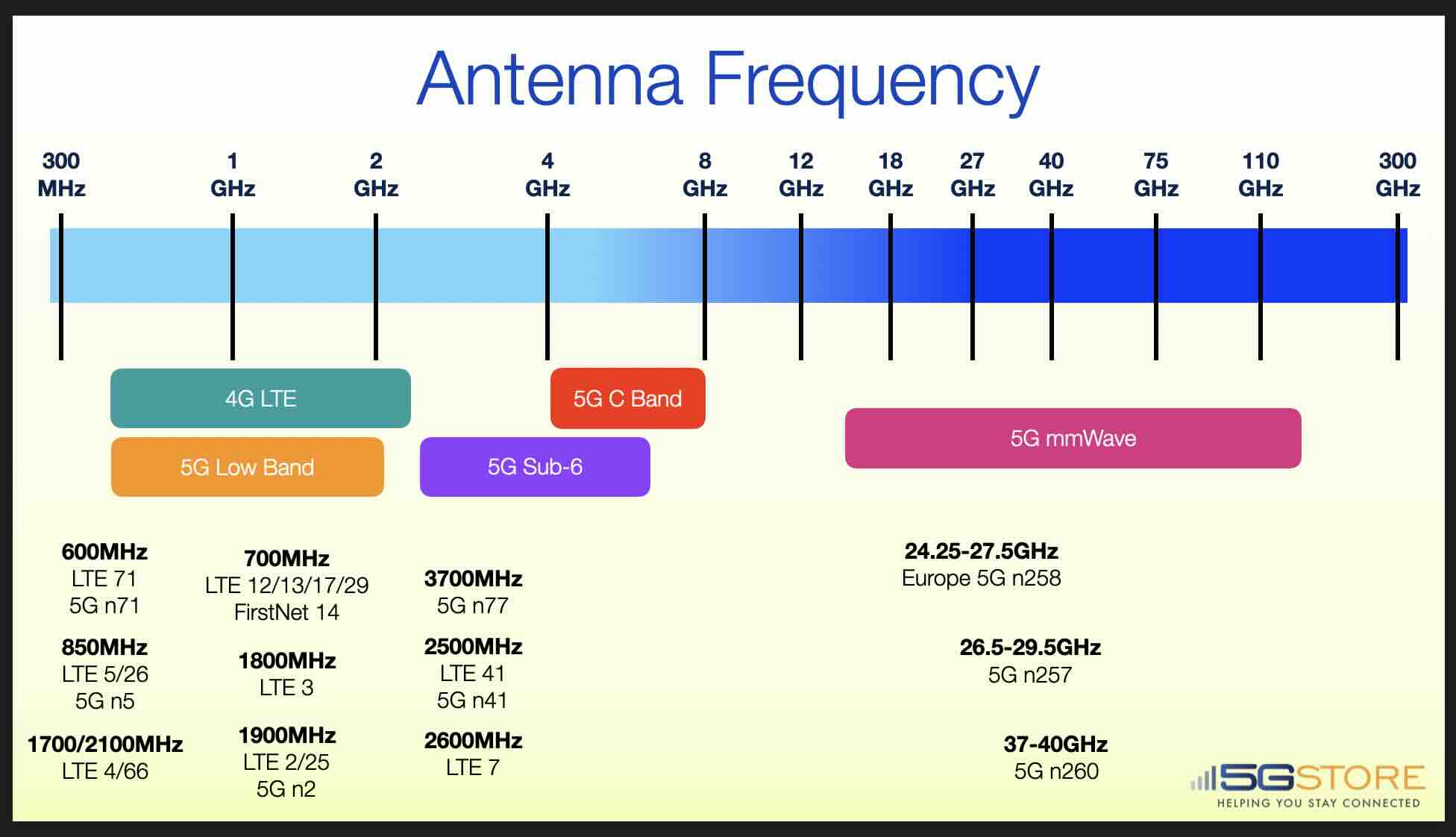


Antennas play a critical role in the transmission and reception of cellular signals. They are designed to emit or receive electromagnetic waves, which carry information such as voice, data, and video, over the air. In the case of cellular networks, antennas are used to communicate between the mobile devices and the base stations. When you make a call or send a message on your smartphone, your device sends the signal to the nearest base station via an antenna, which then relays the signal to its destination.
But what about antenna frequencies? How do they impact cellular communication?
LTE (Long-Term Evolution) and 5G (5th Generation) cellular frequencies are used for wireless communication over cellular networks. LTE and 5G use various frequency bands depending on the region and the cellular operator. Generally speaking, LTE uses lower frequencies than 5G. Some are similar however, but are expanded to include additional frequency ranges (e.g. LTE Band 71 and 5G Band 71). It's important to note that frequency bands used by LTE and 5G vary between countries and network operators.
The use of different frequency bands can impact the speed, coverage, and penetration of wireless signals. Higher frequency bands can provide faster data speeds and lower latency, but they may have lower coverage and penetration compared to lower frequency bands. This is why it's important to choose the right antenna frequency for your specific use case. Whether you're building a cellular network, designing a wireless device, or simply trying to improve the signal quality on your smartphone or modem, understanding antenna frequencies is essential.
At 5Gstore.com, we specialize in providing high-quality antennas for cellular networks, WiFi, and GPS. Our antennas are designed to meet the specific needs of your project, whether you're looking for a low-cost solution for a small deployment or a high-performance antenna for a large-scale network.
5G Band n257 operates in the millimeter wave (mmWave) frequency range of 26.5 GHz to 29.5 GHz. As part of the high-band 5G spectrum, Band n257 delivers ultra-fast data speeds, minimal latency, and high-capacity network performance. This makes it an ideal choice for urban networks, enterprise solutions, and private 5G deployments that demand reliable high-speed connectivity.
Extreme High-Speed Connectivity
Band n257 supports multi-gigabit per second (Gbps) speeds, enabling seamless ultra-HD video streaming, cloud gaming, and next-gen industrial applications.
Ultra-Low Latency
With near-instantaneous response times, Band n257 is ideal for autonomous vehicles, smart manufacturing, and mission-critical enterprise solutions.
High-Capacity Network Performance
This mmWave frequency supports dense user environments, reducing congestion and ensuring stable connections in high-traffic areas like stadiums and urban centers.
Optimized for Private 5G Networks
Enterprises and industries use Band n257 for secure, high-performance private 5G networks tailored for manufacturing, logistics, and smart cities.
Advanced 5G Applications
Band n257 supports emerging technologies, including augmented reality (AR), virtual reality (VR), AI-powered automation, and remote healthcare solutions.
Despite its advantages, Band n257 has some limitations:
Limited Coverage Range: Due to its high frequency, Band n257 has a shorter range than mid-band and low-band 5G, requiring a dense network of small cells for widespread coverage.
Obstacle Penetration Challenges: mmWave signals struggle to penetrate buildings, trees, and other obstructions, making outdoor deployment and clear line-of-sight essential.
Urban and Enterprise-Focused Deployment: Band n257 is primarily deployed in urban areas and private networks, with limited availability in rural regions.